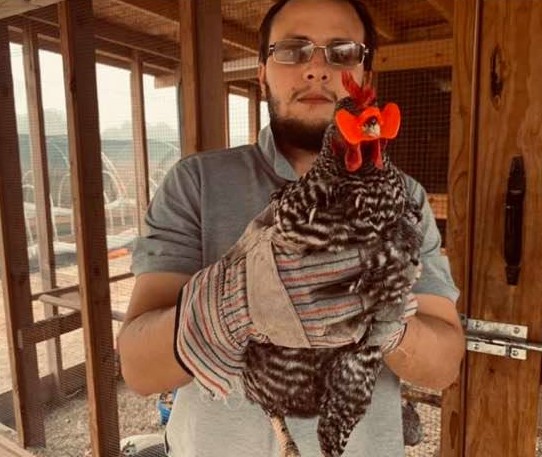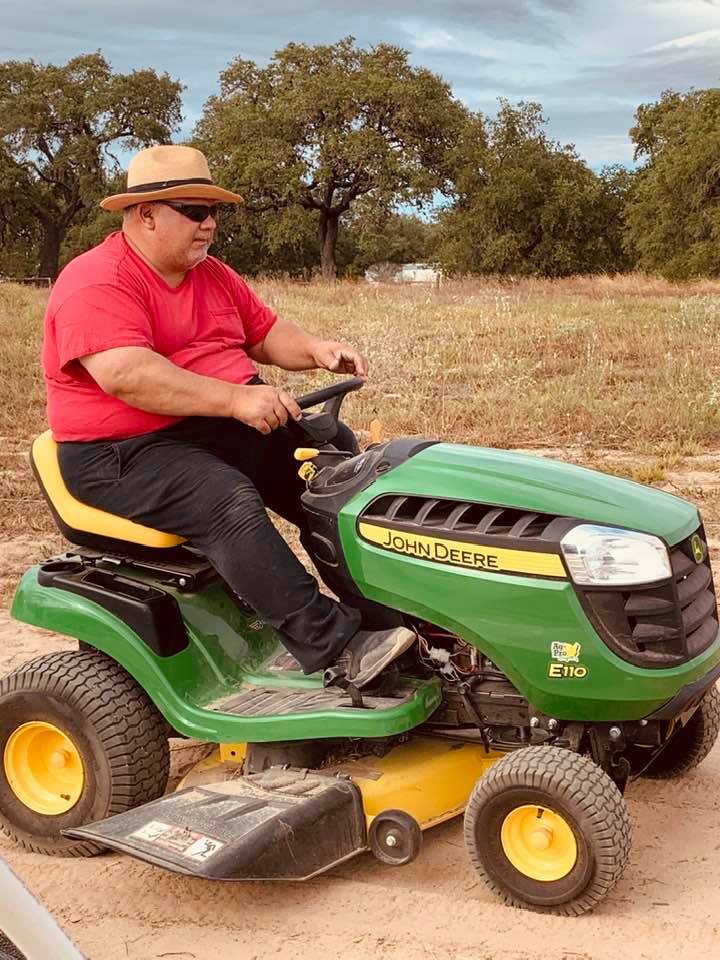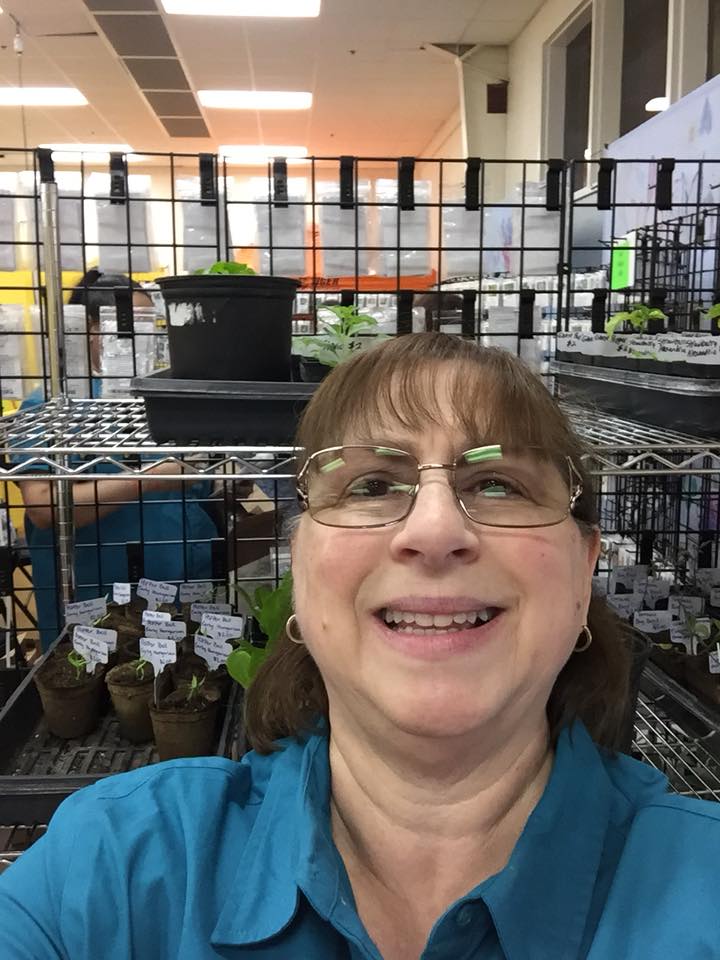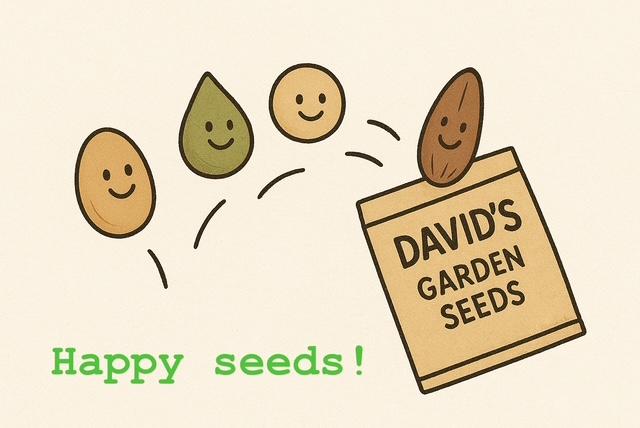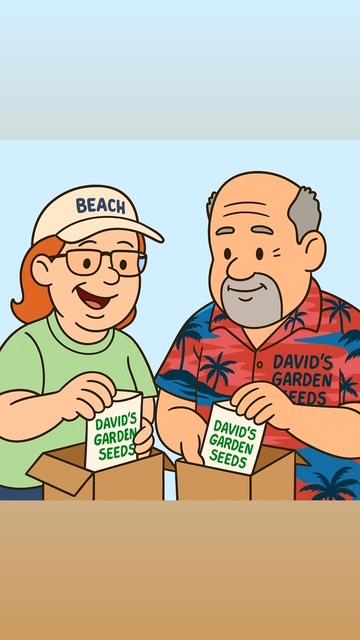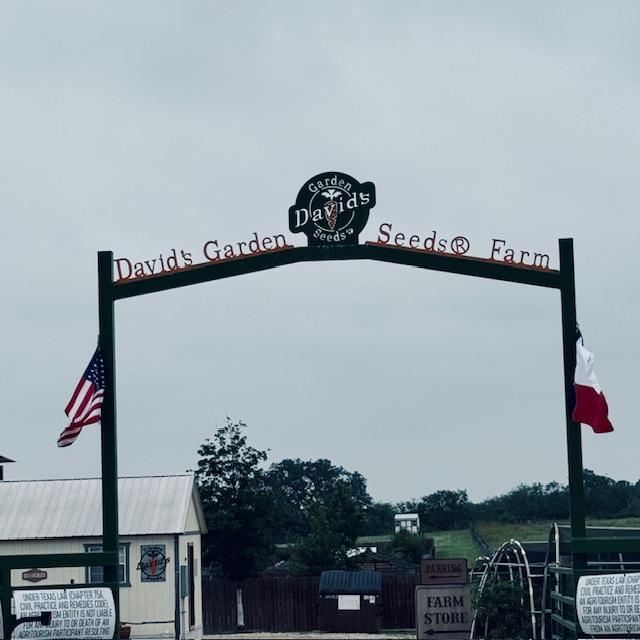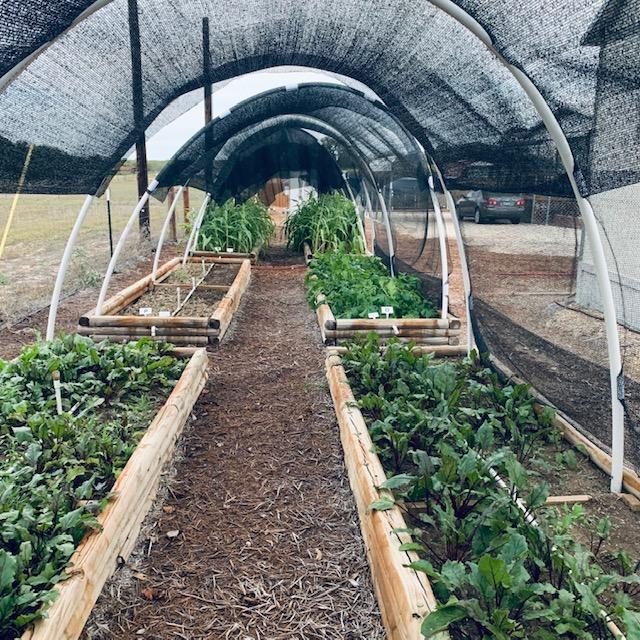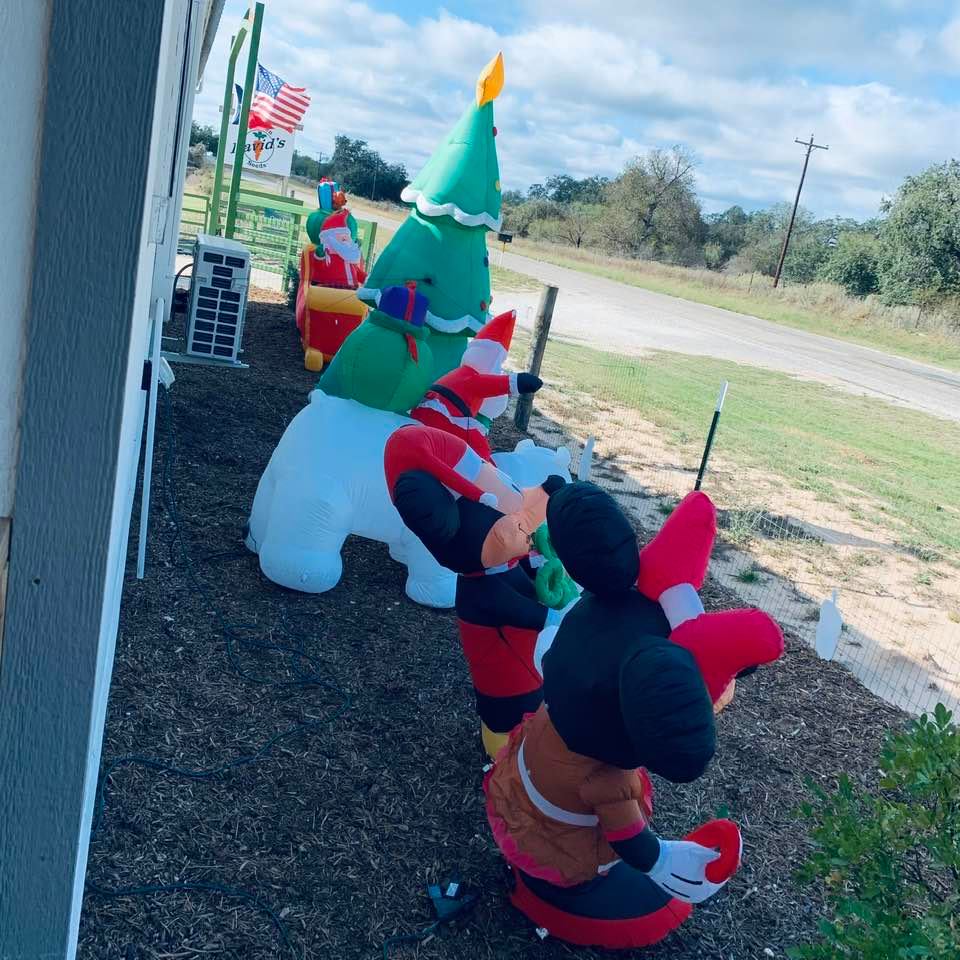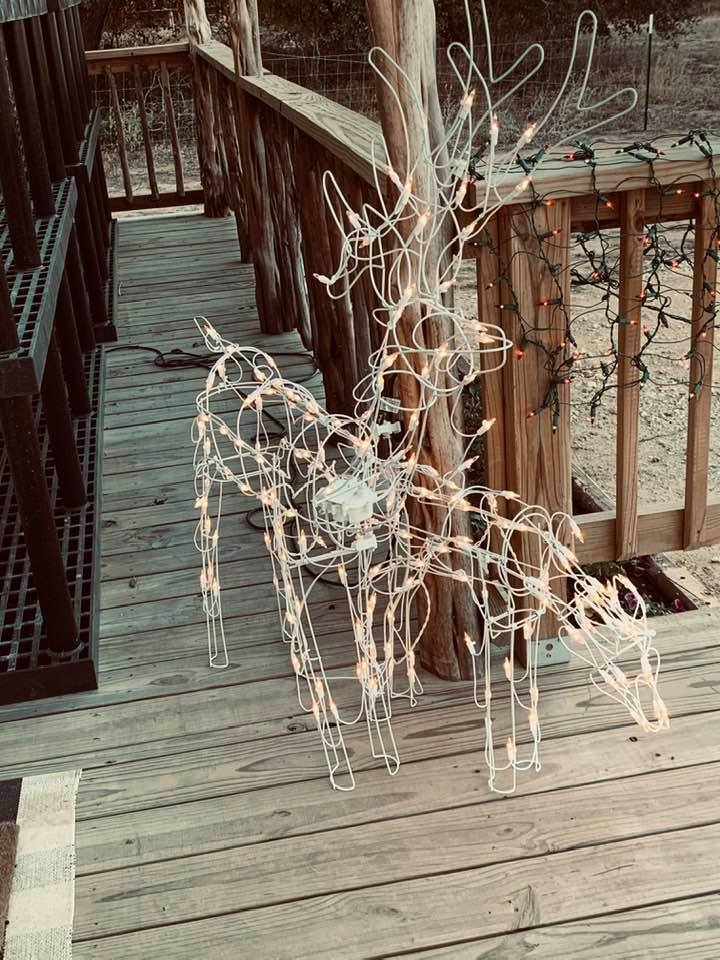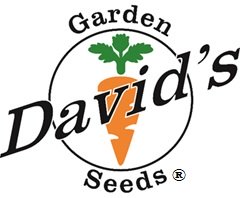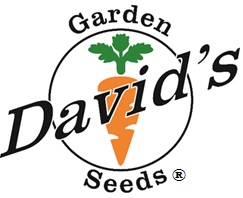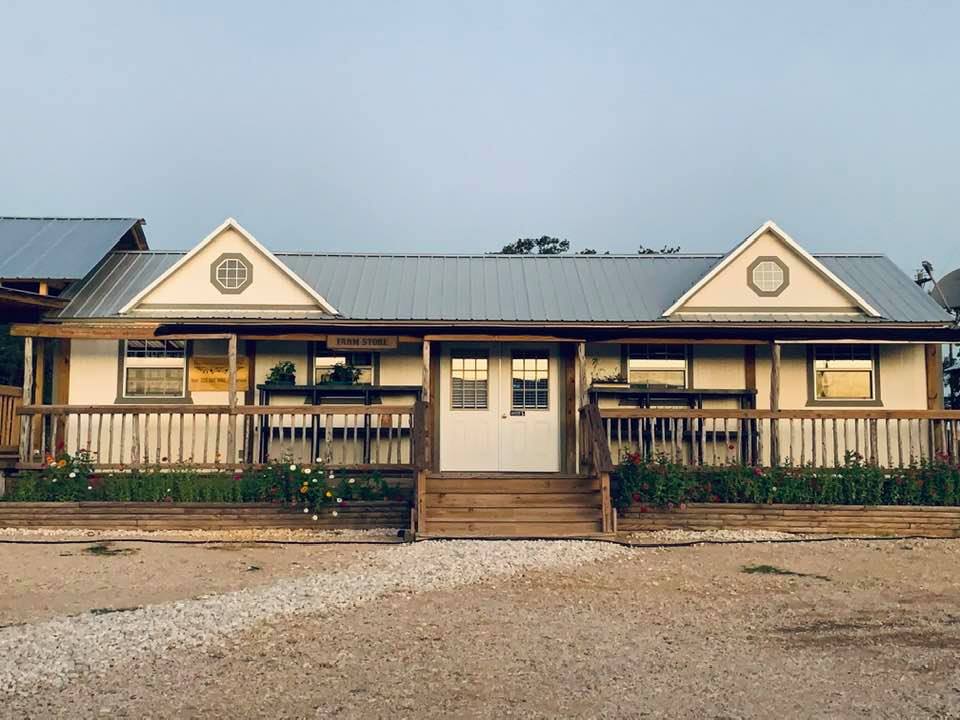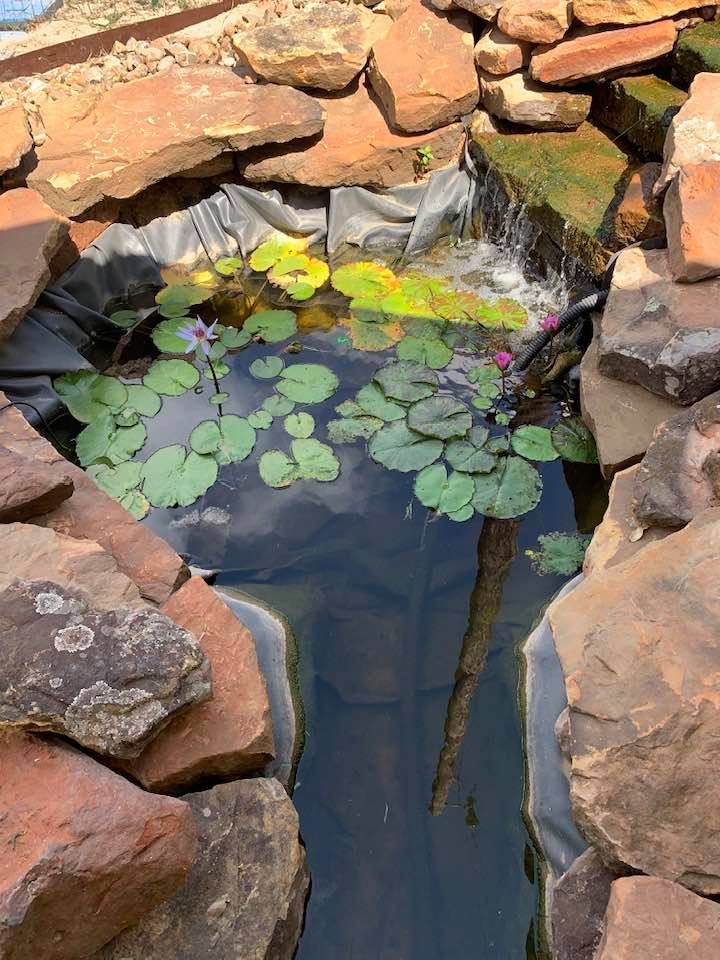Grow Cucumbers
Be sure that you grow cucumbers in both your spring and your fall gardens if you live in a warm climate like Texas. There is almost always plenty of time in the fall before a frost.
Have you ever bitten into a crisp, fresh cucumber from your own garden and thought, "Why didn't I start doing this sooner?" Growing cucumbers from seed in your garden in early spring and again in the fall garden is one of the most rewarding experiences you can have as a home gardener. There's something magical about watching those tiny seeds transform into vigorous vines loaded with crunchy, delicious cucumbers.
I remember my first attempt at growing cucumbers. I planted them way too close together, didn't give them anything to climb on, and wondered why my harvest was disappointing. But once I learned the basics, everything changed. Now, I'm here to share what I've learned so you can skip the mistakes and go straight to the success.
David's Garden Seeds has Asian, gherkin, pickling, and slicing cucumber seeds here.
Grow Cucumbers - 10/27-11/2/2025
Grow Cucumbers from Seed: Your Complete Guide to Spring and Fall Success
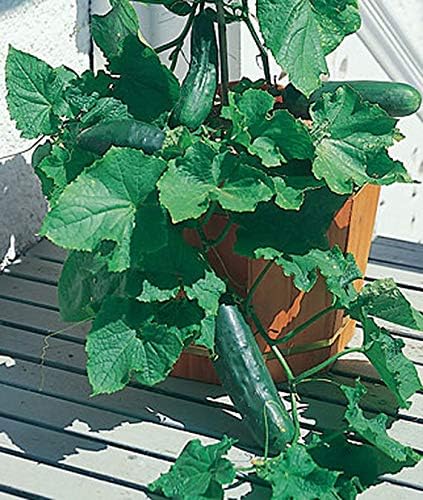 Spacemaster is compact for a pot but grows a lot of big cucumbers.
Spacemaster is compact for a pot but grows a lot of big cucumbers.Before we dig into the dirt, let's talk about why you'd want to grow cucumbers from seed in your garden in early spring and again in the fall garden. Cucumbers are warm-season crops that thrive in two distinct growing windows in most American gardens. Spring planting gives you summer harvests, while fall planting extends your cucumber season well into autumn.
The beauty of cucumbers is their versatility. You can slice them for salads, pickle them for winter enjoyment, add them to sandwiches, blend them into refreshing drinks, or simply munch on them as a healthy snack. Plus, they're incredibly productive—a few plants can keep your family supplied all season long.
Grow Cucumbers - Understanding Cucumber Varieties
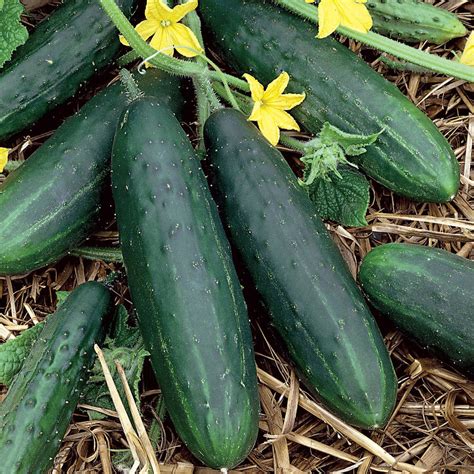 Spacemaster cucumbers.
Spacemaster cucumbers.Not all cucumbers are created equal, and choosing the right variety makes all the difference. At David's Garden Seeds, you'll find four main types of cucumbers: gherkins, Asian cucumbers, pickling cucumbers, and slicing cucumbers. Each has its own personality and purpose in your garden and kitchen.
Gherkins are those adorable little cucumbers you see in jars at the store. They're typically harvested when they're just 1-2 inches long, making them perfect for tiny pickles. If you love those crunchy, tangy cornichons served with charcuterie boards, gherkins are your go-to variety.
Asian cucumbers are long, slender, and incredibly crisp. They often have thin skins that don't need peeling and a sweet, mild flavor. These are fantastic for fresh eating, Asian-inspired dishes, and salads. They're also burpless, which means they're easier on your digestive system.
Pickling cucumbers are the workhorses of the cucumber world. They're shorter and blockier than slicing types, with bumpy skin and firm flesh that holds up beautifully in brine. Growing pickling cucumbers is essential if you want to make your own dill pickles, bread and butter pickles, or any other preserved cucumber treats.
Slicing cucumbers are what most people picture when they think of cucumbers. They're longer, smoother, and perfect for fresh eating. When you grow slicing cucumbers, you're setting yourself up for endless salads, cucumber water, and those classic cucumber sandwiches.
Grow Cucumbers - Preparing Your Soil for Success
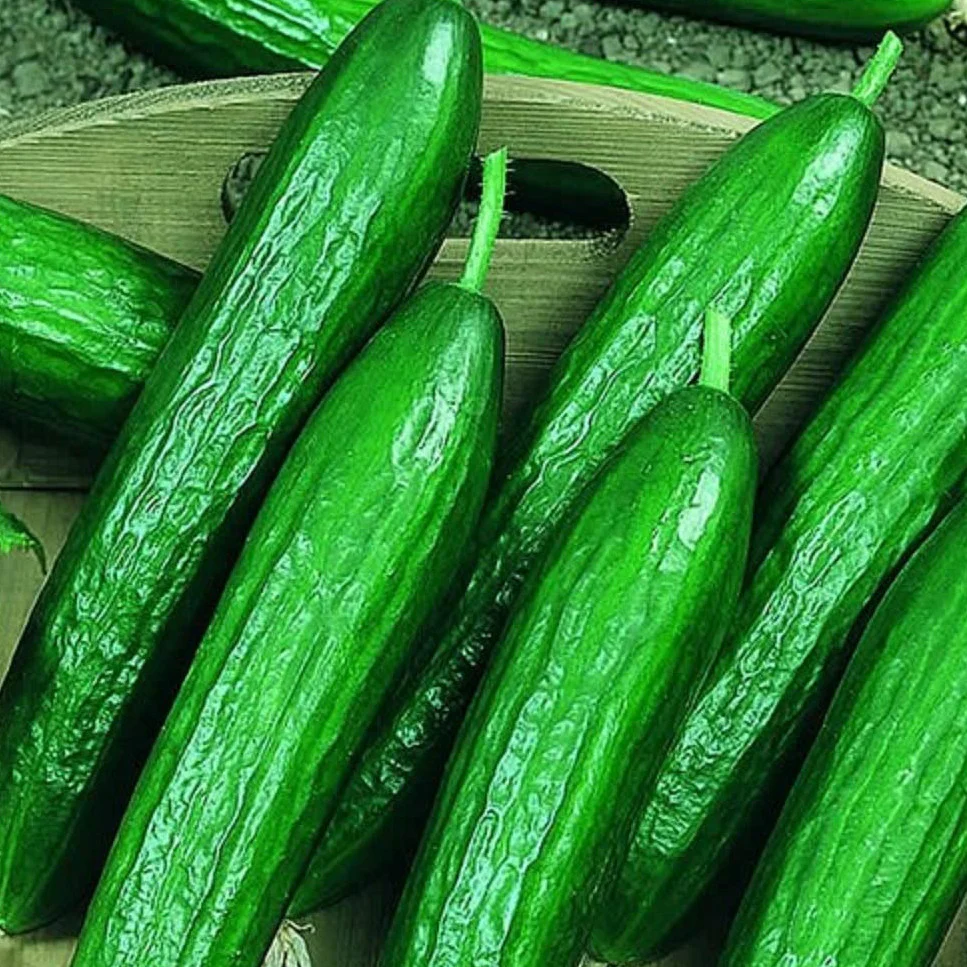 This is our English cucumber, the Beit Alpha. You know--the ones at the grocery store wrapped in cellophane. Now you can grow them yourself and skip the cellophane.
This is our English cucumber, the Beit Alpha. You know--the ones at the grocery store wrapped in cellophane. Now you can grow them yourself and skip the cellophane.Let's get our hands dirty and talk about soil preparation. Cucumbers are heavy feeders, which means they need nutrient-rich soil to produce those abundant harvests you're dreaming about. The good news is that preparing your soil doesn't have to be complicated.
Start by choosing a spot that gets full sun—at least 6-8 hours of direct sunlight daily. Cucumbers love warmth and light, and they'll reward you with better growth and more fruit when they're basking in the sun. I learned this the hard way when I planted mine in partial shade and got scraggly vines with few cucumbers.
Your soil should drain well but retain moisture. Cucumbers hate wet feet but also don't want to dry out completely. The ideal soil is loose, rich, and slightly acidic to neutral, with a pH between 6.0 and 7.0. If you're not sure about your soil's pH, grab a simple test kit from your local garden center.
Before planting, work plenty of organic matter into your soil. I like to add 2-3 inches of compost or well-rotted manure and mix it into the top 6-8 inches of soil. This improves drainage, adds nutrients, and creates the fluffy texture cucumber roots love to explore.
If you're dealing with heavy clay soil like I have in part of my garden, consider building raised beds. They warm up faster in spring, drain better, and give you complete control over your soil quality. Plus, they're easier on your back when it's time to plant and harvest.
For fall planting, your soil preparation is similar, but you might need to refresh the nutrients if you've already grown a crop in that spot during the summer. Add a fresh layer of compost and consider a balanced organic fertilizer to replenish what earlier crops took out.
Grow Cucumbers - Timing Your Plantings
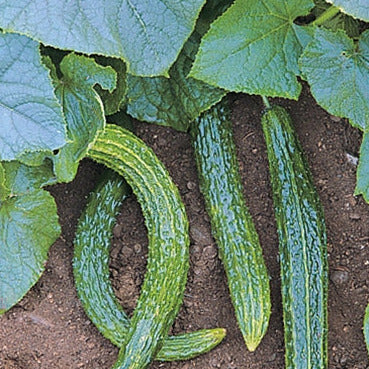 Grow cucumbers that are not the same old ones you are used to eating. Asian Suyo Long is my personal favorite because it is thin, mild, and has wonderful texture.
Grow cucumbers that are not the same old ones you are used to eating. Asian Suyo Long is my personal favorite because it is thin, mild, and has wonderful texture.Timing is everything when you grow cucumbers from seed in your garden in early spring and again in the fall garden. Plant too early, and cold soil will rot your seeds. Plant too late, and you'll miss your optimal growing window.
For spring planting, wait until all danger of frost has passed and your soil temperature reaches at least 60°F, though 70°F is even better. In most areas, this means planting 1-2 weeks after your last expected frost date. I always stick my finger in the soil—if it feels cold, I wait another week.
You can get a jump on the season by starting seeds indoors 3-4 weeks before your last frost date. Use biodegradable pots that you can plant directly in the ground, because cucumbers hate having their roots disturbed. I learned this after killing several transplants by trying to remove them from plastic pots.
For fall planting, count backward from your first expected fall frost date. Most cucumber varieties need 50-70 days to maturity, so plant them 10-12 weeks before frost. This gives them time to produce before cold weather shuts them down.
In warmer climates, you might be able to grow cucumbers year-round or have even longer planting windows. Lucky you! In cooler areas, make the most of your two planting opportunities to enjoy fresh cucumbers for as much of the year as possible.
Grow Cucumbers - Planting Your Cucumber Seeds
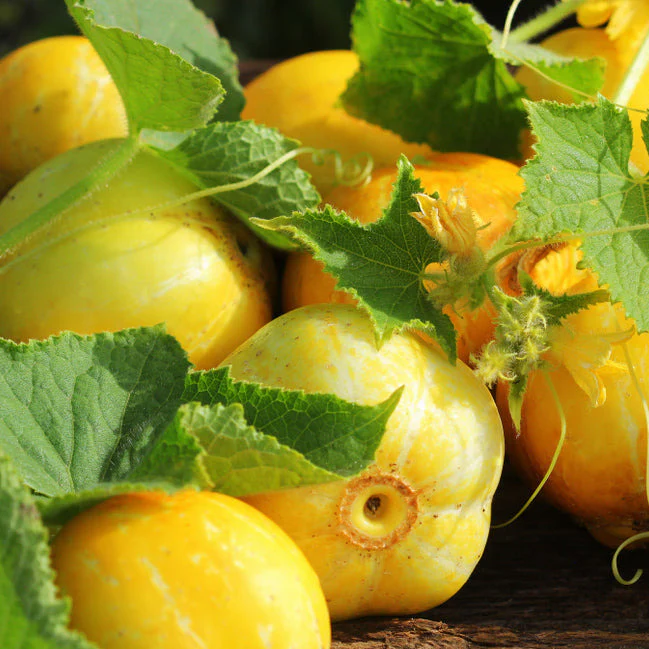 Grow cucumbers like the Lemon Pickling cucumber if you want something different. Aren't they pretty?
Grow cucumbers like the Lemon Pickling cucumber if you want something different. Aren't they pretty?Now comes the fun part—actually planting those seeds from David's Garden Seeds. Whether you're growing pickling cucumbers, slicing varieties, gherkins, or Asian types, the planting process is similar.
Create small hills or mounds of soil about 6 inches high and 12 inches across. Space these hills 3-4 feet apart to give your cucumber vines room to spread. The hills improve drainage and warm up faster than flat ground, giving your seeds a better start.
Plant 4-6 seeds per hill, spacing them evenly around the mound. Push each seed about 1 inch deep into the soil. I like to plant extra seeds as insurance—you can always thin them later, but you can't add more if none germinate.
If you're planting in rows instead of hills, space your seeds 6 inches apart in rows that are 5-6 feet apart. This works well if you're planning to let your cucumbers sprawl on the ground rather than climb.
After planting, water gently but thoroughly. You want the soil moist but not waterlogged. I use a watering can with a rose attachment to create a gentle shower that won't wash away the seeds or compact the soil.
Cover the planted area with a light layer of mulch to help retain moisture and keep the soil warm. I avoid putting mulch directly over the seeds until they sprout, but I do mulch around the hills.
Germination usually takes 3-10 days, depending on soil temperature. Warmer soil means faster germination. Be patient—I know it's hard! Check daily for those exciting first sprouts breaking through the soil.
Once your seedlings have their first true leaves (the second set of leaves that appear), thin them to the 2-3 strongest plants per hill. It feels cruel to pull out perfectly good seedlings, but overcrowding leads to disease and poor production.
Grow Cucumbers - Watering and Fertilizing
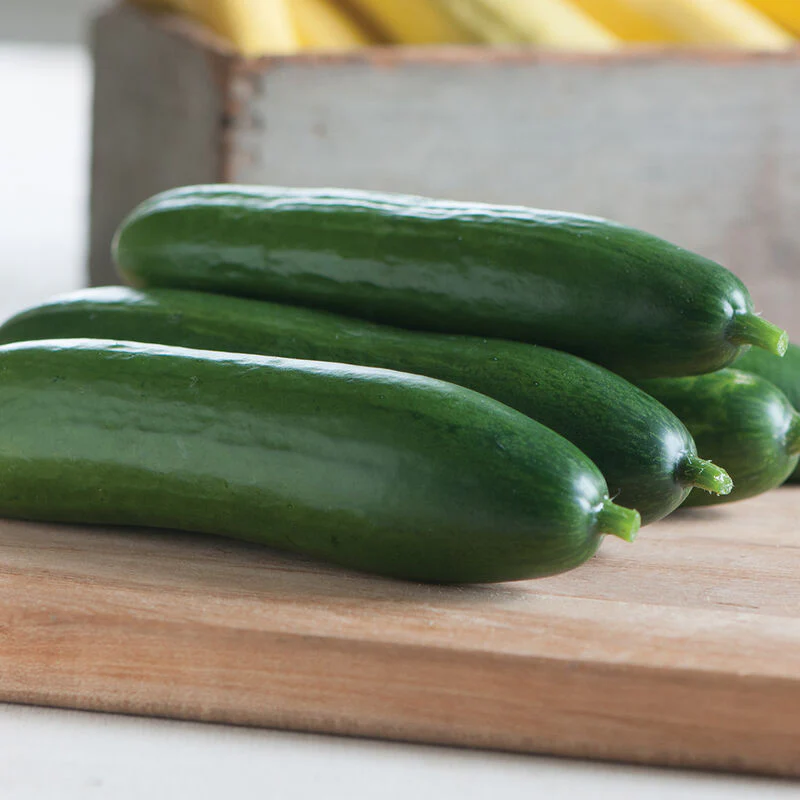 Grow cucumbers like the Diva Slicing cucumber, our most popular slicing even though it is a hybrid. It has great flavor and disease resistance.
Grow cucumbers like the Diva Slicing cucumber, our most popular slicing even though it is a hybrid. It has great flavor and disease resistance.Cucumbers are thirsty plants, and consistent watering is crucial for growing great cucumbers. Irregular watering leads to bitter fruit, misshapen cucumbers, and blossom end rot. Trust me, you don't want any of those problems.
Water deeply once or twice a week, providing about 1-2 inches of water total. The goal is to keep the soil consistently moist but never soggy. I stick my finger into the soil—if it's dry an inch down, it's time to water.
Morning watering is best because it gives the leaves time to dry before evening, reducing disease risk. Avoid overhead watering if possible, as wet leaves invite fungal problems. Drip irrigation or soaker hoses are ideal for cucumbers.
Mulch is your friend when it comes to maintaining soil moisture. Apply 2-3 inches of organic mulch around your plants once they're established. This keeps the soil evenly moist, suppresses weeds, and keeps the cucumbers clean when they rest on the ground.
As for fertilizing, cucumbers need regular feeding to support their vigorous growth and heavy fruit production. Start with that nutrient-rich soil we talked about earlier, then supplement throughout the growing season.
When your plants start flowering, begin feeding them every 2-3 weeks with a balanced fertilizer or compost tea. I like to use a fish emulsion or seaweed-based fertilizer diluted according to package directions. These organic options feed the plants while improving soil health.
Watch your plants for signs of nutrient deficiency. Yellow leaves might indicate nitrogen deficiency, while poor fruit development could mean they need more phosphorus and potassium. Adjust your fertilizing accordingly.
Grow Cucumbers - Supporting Your Cucumber Plants
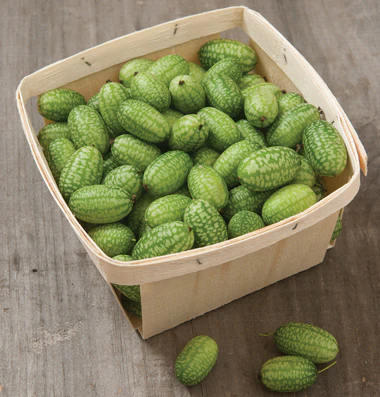 This is the Mexican Sour Gherkin, one of my favorites to grow, also known as the Cucamelon.
This is the Mexican Sour Gherkin, one of my favorites to grow, also known as the Cucamelon.Here's a game-changer I wish I'd known from the start: growing cucumbers vertically saves space, improves air circulation, and makes harvesting so much easier. Plus, your cucumbers will be straighter and cleaner when they're not lying on the ground.
Install trellises, cages, or other supports at planting time or shortly after, before the vines get too large. I made the mistake once of trying to trellis established plants and ended up damaging several vines. Learn from my error!
A simple trellis can be made from wooden stakes and strong twine or netting. Make it at least 5-6 feet tall for vining varieties. Some cucumber varieties are bush types that don't need support, so check your seed packet.
As your cucumber vines grow, gently guide them toward the support structure. They'll naturally want to climb using their tendrils. You might need to loosely tie the main stem to the support initially to get them started.
Growing cucumbers vertically is especially important when you grow slicing cucumbers, as it helps them develop that nice straight shape. It also works beautifully for Asian cucumbers and even pickling types.
Grow Cucumbers - Caring for Your Cucumber Plants
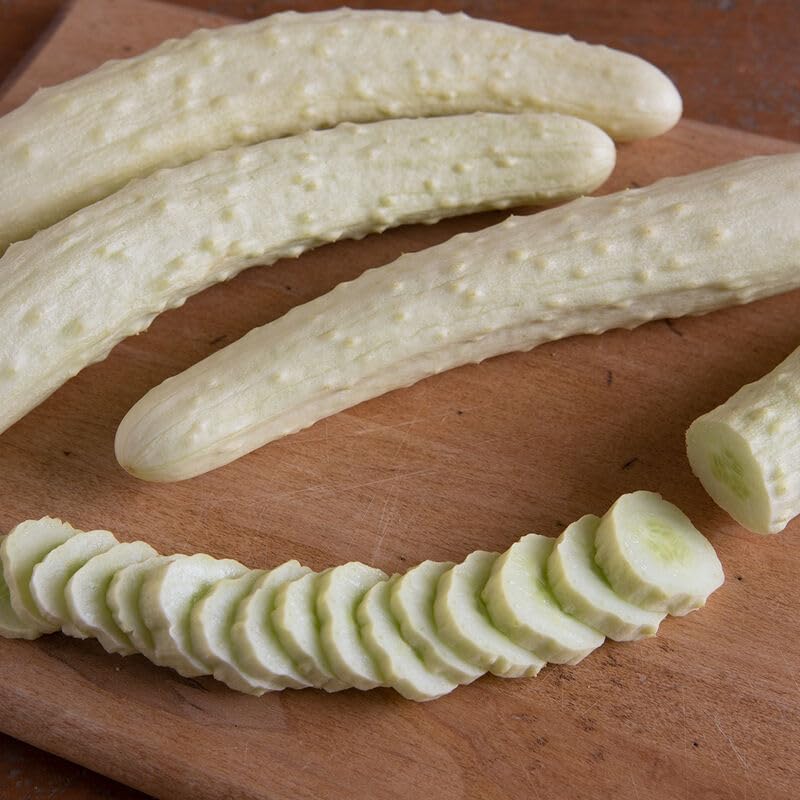 This is the Asian Itachi cucumber. Yes, it is white. In fact, we sell several white cucumbers.
This is the Asian Itachi cucumber. Yes, it is white. In fact, we sell several white cucumbers.Once your cucumbers are growing, they need regular attention to stay healthy and productive. The good news is that cucumbers aren't particularly fussy if you give them the basics they need.
Check your plants daily for pests. Cucumber beetles are the main villain in most gardens—they're yellow with black stripes or spots, and they can devastate young plants. Hand-pick them in the morning when they're sluggish, or use row covers to protect young plants.
Aphids, spider mites, and squash bugs might also visit your cucumber patch. A strong spray of water often dislodges aphids, while insecticidal soap handles most other pests. I try to avoid harsh chemicals and rely on beneficial insects like ladybugs to help control pests.
Watch for diseases like powdery mildew, downy mildew, and bacterial wilt. Good air circulation, proper spacing, and avoiding wet foliage go a long way toward preventing these problems. If disease does strike, remove affected leaves promptly.
Keep the area around your plants weed-free. Weeds compete for nutrients and water, and they can harbor pests and diseases. That mulch layer helps tremendously with weed control, but you'll still need to pull any weeds that pop up.
Pinching off the growing tips of your cucumber vines when they reach the top of your trellis encourages them to put energy into fruit production rather than more vine growth. This is optional but can improve yields.
Grow Cucumbers - Understanding Pollination
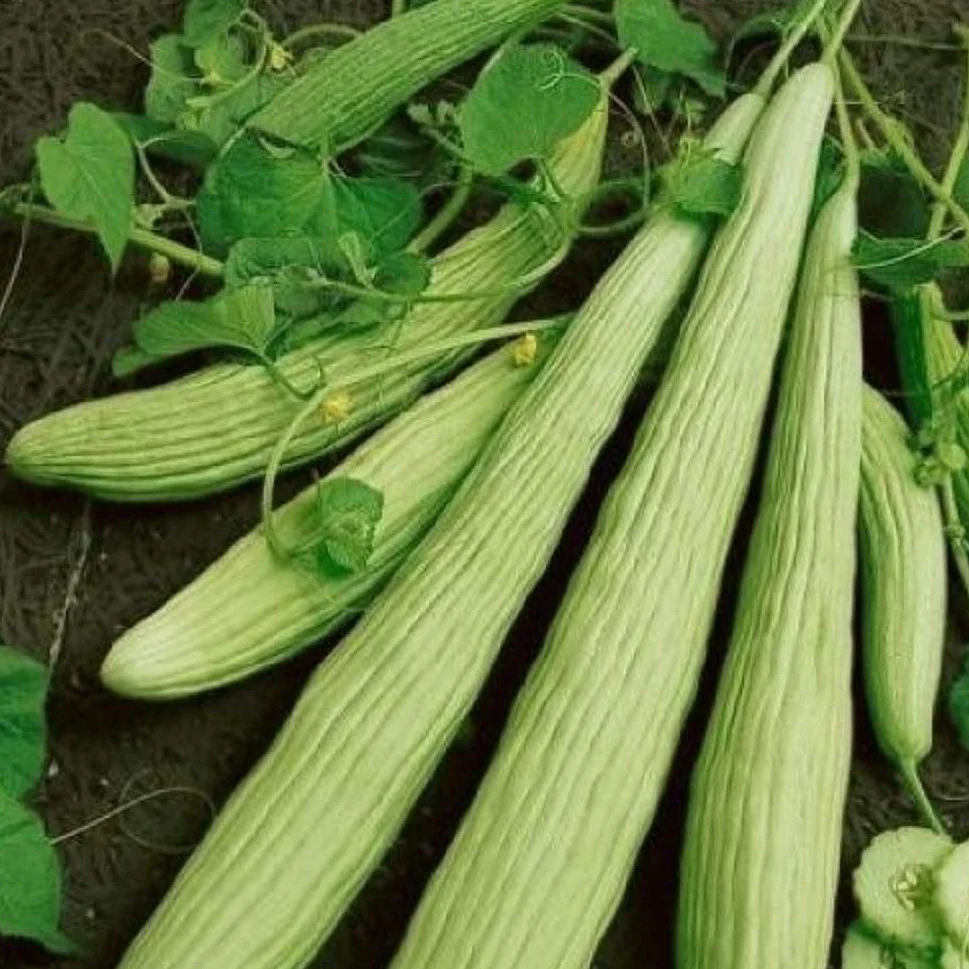 This is the Armenian Yard Long slicing cucumber. They grow 2 to 3 feet long.
This is the Armenian Yard Long slicing cucumber. They grow 2 to 3 feet long.Here's something that confused me when I first started growing cucumbers: why were there flowers but no fruit? The answer lies in understanding cucumber pollination.
Cucumbers have separate male and female flowers on the same plant. The male flowers appear first and don't produce fruit—they just provide pollen. Female flowers have a tiny cucumber-shaped swelling at the base and need to be pollinated to develop into full-sized cucumbers.
Bees and other pollinators do most of the work, transferring pollen from male to female flowers. This is why avoiding pesticides and planting pollinator-friendly flowers nearby is so important. No pollinators means no cucumbers!
If you're not seeing many pollinators in your garden, you can hand-pollinate. Simply pick a male flower, remove the petals, and gently brush the pollen-covered center against the center of a female flower. I've done this on cool mornings when bees aren't active, and it works great.
Grow Cucumbers - Harvesting Your Cucumbers
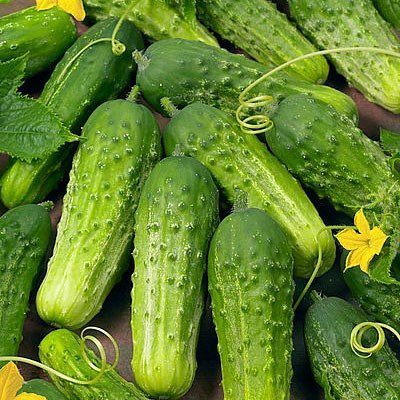 Grow cucumbers for pickles. These are the Boston pickling cucumbers.
Grow cucumbers for pickles. These are the Boston pickling cucumbers.The moment you've been waiting for—harvest time! Knowing when and how to pick your cucumbers makes all the difference in quality and continued production.
For slicing cucumbers, harvest when they're 6-8 inches long and have a uniform dark green color. Don't let them get too large or they'll become seedy and bitter. When growing pickling cucumbers, pick them at your desired size—smaller for gherkins (1-2 inches), medium for dills (3-4 inches), or larger for chunky pickles (4-6 inches).
Asian cucumbers can grow quite long—12-15 inches—without becoming bitter. Harvest them when they're slender and firm. Gherkins should be picked daily when they reach 1-2 inches for the best texture.
Use scissors or pruning shears to cut cucumbers from the vine, leaving a short stem attached. Pulling or twisting can damage the vine and reduce future production. Check your plants every day or two during peak production—cucumbers can hide under leaves and grow huge overnight!
The more you harvest, the more your plants will produce. Leaving overripe cucumbers on the vine signals the plant to stop producing new fruit. Keep picking, even if you're giving cucumbers away to neighbors!
After harvesting, store cucumbers in the refrigerator where they'll keep for about a week. For pickling cucumbers, use them within a day or two of harvest for the crispest pickles.
Slicing cucumbers are perfect for fresh eating, adding to salads, making cucumber water, or creating cool summer soups. And remember, when you're ready to grow cucumbers from seed in your garden in early spring and again in the fall garden, David's Garden Seeds® has all the varieties you need to make your cucumber-growing dreams come true. Happy gardening!
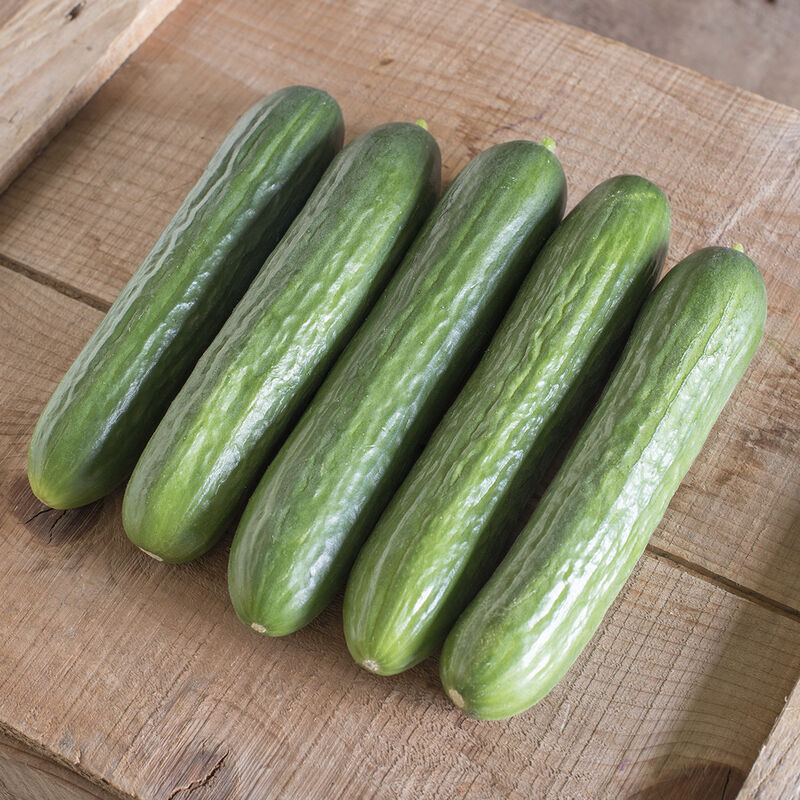 The Katrina slicing cucumber is a hybrid that is heat tolerant.
The Katrina slicing cucumber is a hybrid that is heat tolerant.Monday, October 27, 2025
Good Monday morning. It is a new week again. They sure go by fast, don't they? This week, we are talking about how to grow cucumbers, one of our most popular vegetable seeds. Study this article now and choose and order your cucumber seeds because when spring comes, they will go fast.
This morning, we have someone coming by to help with replacing and putting up a new bee area. We will be moving them to a shaded area once we have cleaned up all of the frames that were ruined with wax moths and mites.
David started cleaning up the bee frames. Then he has to put them in the freezer to kill the wax moths and then finish cleaning the frames. We do need help. There is just too much to do with the business for us to do everything else as well.
A bit of excitement--tiny baby snapdragon plants are coming up in the flowerbeds outside of the farm store! Yay! Also, there is mist in the air so everything is getting a bit wet which is what we need. There was no fog but there was a fog advisory that ended at 9am. Now that it is over, the fog appears to be moving in...
We had one set of customers who bought seeds today. Another man came in and looked everything over and then wanted the name of a nursery where he could get vegetable starts at the end of October. He said he would be back for seeds later and left.
Tuesday, October 28, 2025
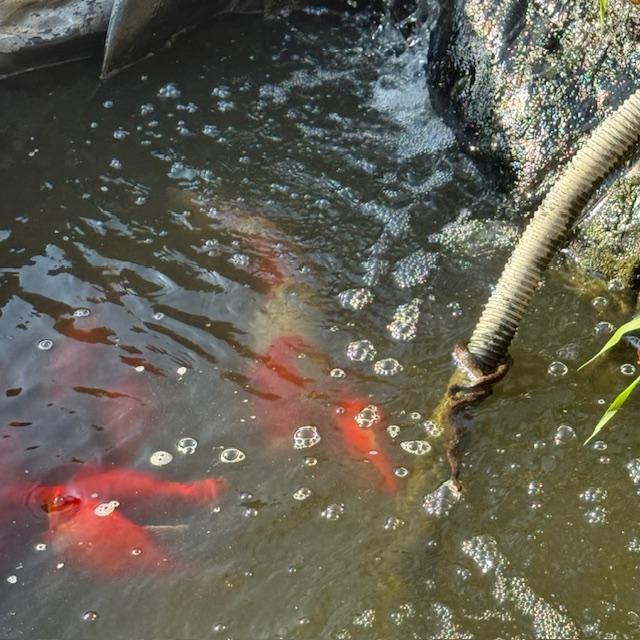 The nasty snake appeared again.
The nasty snake appeared again.Good morning. I had the worst night. I was awake for about four hours starting at just before 1am. My ear started hurting. Then as I was finally drifting off over two hours later, my right foot had a full on neuropathy attack and it just wouldn't end, no matter how much Mama Bear Oasis cream I put on it. They say if you use it, you will have no more neuropathy pain. What a joke.
My ear is still bothering me and I have no idea why. I am so tired. It should be a great day...Ha!
Our helper just called in because she has a flat so now I get to do her job today in addition to mine. I have had flats before on the way to work and I just got them changed and went to work. I have never called in for having a flat in my life. How about you?
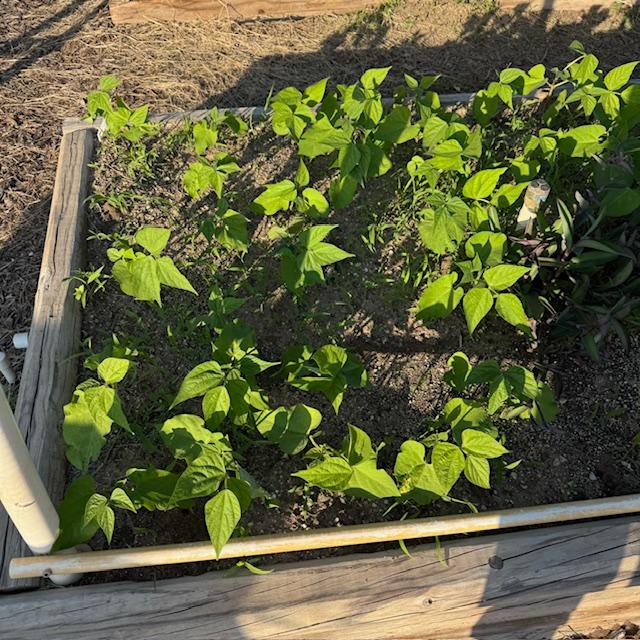 David's green bean plants are doing well.
David's green bean plants are doing well.So I went to work filling orders. In the kitchen by the fridge, I noticed a lot of food crumbs and some juice that dried on the floor. I swept and then cleaned up all of the juice, took out the very full trash from the kitchen and put in a new trash bag. I sat back in my chair and I heard a female voice saying hello...
Our helper made it in at 9:45am. David is over counting seeds and Matt is out back with another helper doing things to the greenhouse.
It is hot and humid at 76°. Supposedly tonight it will be much cooler, down in the 50s. I will believe it when I feel it. Back to the orders.
We had one customer in the store today. Hughes Electric showed up then to do some work in the back for David. I have no idea what he did.
 Blowing sand at the grass farm across the street. It is all over the place.
Blowing sand at the grass farm across the street. It is all over the place.Around 5pm, I went out and saw that the wind is blowing sand everywhere. We are having a "fire weather warning" because of the high wind through tomorrow evening.
It is supposed to cool down a bit tonight. I can only hope. Anyway, David and Matt are out back right now doing some things. I need to go put some dinner together. It is 5:30pm.
The snake is back in the pond this afternoon.
Wednesday, October 29, 2025
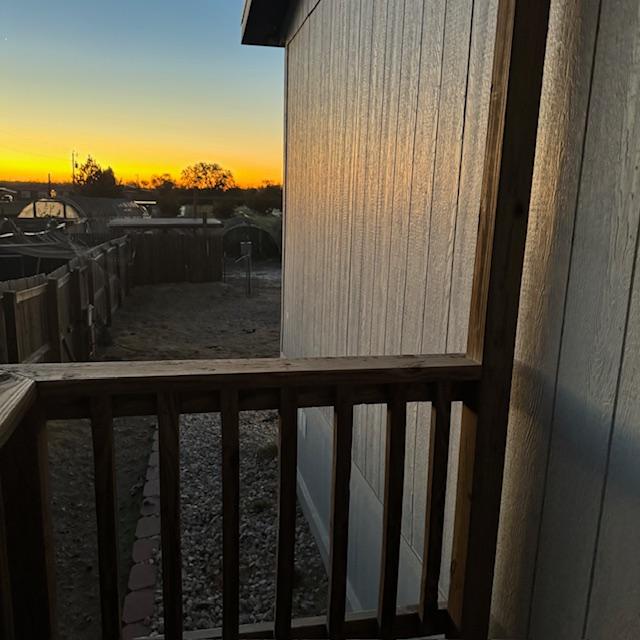 Sunrise this morning from the side porch.
Sunrise this morning from the side porch.Good morning. Coolness has finally come to Rossville, Texas! It is 52° and the high should be 72°. It will remain cool all week long and then next week temperatures go back up into the 80s. But at least it is not going back up into the 90s yet.
This Saturday night is the time change. I am getting tired of waiting until after 7am for it to get light outside.
This morning, David will leave the farm for Hondo. He is taking his sister out for lunch at Hermann Sons Steak House. I refuse to go because of the way she treats me. I am done with people who treat me like crap.
Matt is here and he and David are dismantling the pool and giving it away to some man who came here on Saturday saying he wants it. All I can say is I had better get a new one.
My feet have been having bouts of neuropathy all week during the day and during the night, every day and night. I am taking supplements and using several magnesium creams but all of a sudden they are not working at all.
I got up this morning with my foot going off again after going off at 2am and looked up what else I can do. I have ordered some different supplements and creams. They should be here tomorrow depending on the Amazon workers and drivers.
Apparently, it is not just magnesium that I should be taking. Why don't doctors tell you this? Good golly but they are pretty worthless, aren't they? I mean I have paid two different podiatrists over a period of several years and neither one has told me much. The second one told me about taking magnesium supplements but that is it.
The first one told me there is absolutely nothing I can do about it except put Icy Hot on my foot every time I have a neuropathy attack. All that does is mask the pain. At that point, I was having attacks two or more times a day and every night.
Then I learned about magnesium and it has really helped until recently. But I learned about it and started taking it before I saw the second podiatrist. She just agreed that I should take it. I have had it with all of them. Then she gave me a nerve block that did not last for two whole days before I had neuropathy pain again. I have not been back to her since then.
I guess I had better get ready for work and go out and greet the coolness while it is here.
David left at 10:40am for Hondo and he just got back at 1:30pm. He said Hermann Sons has reorganized and changed. The place is cleaner and the food and service are better. He said the menu is much smaller as well.
While he was gone, I chopped vegetables and started a stew for dinner tonight. I love stew and it will be perfect for the cooler weather. All the help left while I was making the stew. I just went back to the house to check on it and that is when David came in.
Now I am counting more seeds which I have already been doing for a few hours. No customers yet.
We had one set of customers all day which is good for this windy day.
The stew was incredibly delicious.
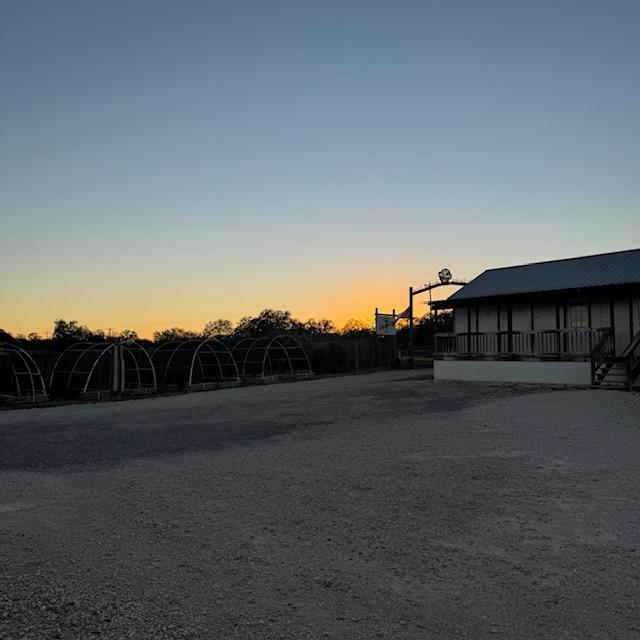 As the sun goes down, I was saying something to Matt before he got in his car.
As the sun goes down, I was saying something to Matt before he got in his car. He told me to come down off the porch and look at the moon over the house. It looks really cool.
He told me to come down off the porch and look at the moon over the house. It looks really cool.He was right. The air is already much cooler. Summer is over for a week or so...
Thursday, October 30, 2025
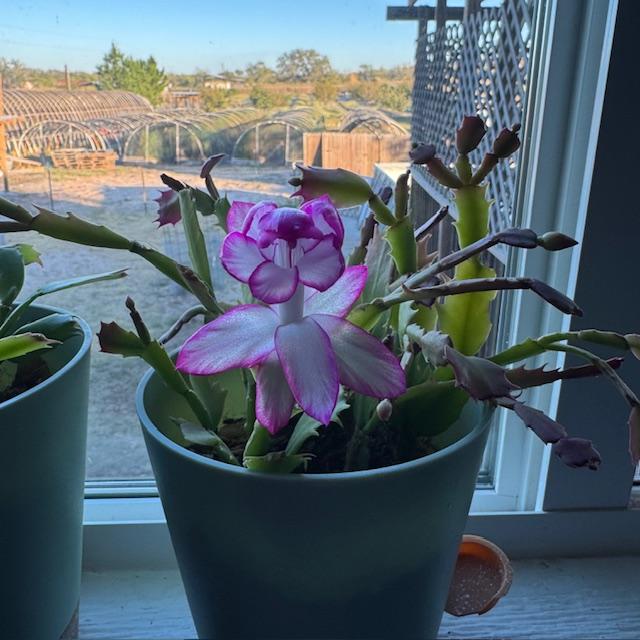 My Thanksgiving cactus is blooming on my kitchen windowsill!
My Thanksgiving cactus is blooming on my kitchen windowsill!Good morning. It is 6am and get this. It is 36° Fahrenheit. They said the low would be 42° but all night long as I would wake up, I kept asking Alexa and it got lower and lower.
This morning, we are taking Samantha, the dropped off kitten who has hung around here on the deck between the store and the kitchen building, to the vet for shots. After that, we will schedule when to get her fixed because we don't a million more kittens. She seems to really like living on our deck. I got her a nice blanket for last night and she cuddled right up to it. She also has stuffed mice that she enjoys playing with.
 Here is a closeup of Sam the kitty in her carrier. She is doing fine.
Here is a closeup of Sam the kitty in her carrier. She is doing fine.It is now 7:19am and still dark. I actually had a good night with no neuropathy.
I have the cat carrier ready but I am sure it won't be smooth going when I try to put Samantha in there. She has never been restrained before. The vet's office said she must be in a carrier. Of course, I would not take a cat anywhere without one. That girl must think I am brainless.
Anyway, it is still 36° and I need to go out there and feed Samantha and I will put a bit of her food into the carrier along with a few toys. Yes, I bought her a bag of cat toys. David threw out all of our old cat's toys and the catnip so I don't have that.
 Here is Sam waiting in the lobby at the vet. She did such a good job.
Here is Sam waiting in the lobby at the vet. She did such a good job.I had no problem getting the kitty into the carrier. We got her over to the vet and she was so good getting all of the shots and putting up with all of the poking and probing they did to her. She did not make any noise at all. The vet said she is in good health and is six months old. She will be spayed next week.
We got back and have been working on orders and counting seeds.
At 6pm, while I was making dinner, a man came and bought a bunch of large metal shelving units so that is another thing we got rid of.
We had chicken and rice for dinner while we watched Hell's Kitchen and I made blueberry muffins for dessert.
Friday, October 31, 2025
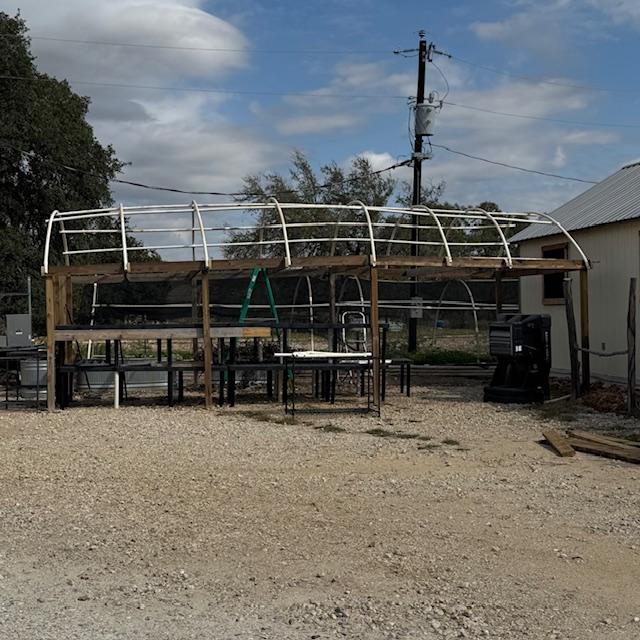 The front plant area by the Farm Store is being changed into a greenhouse high tunnel where David will grow spring veggie plants this winter for sale in spring.
The front plant area by the Farm Store is being changed into a greenhouse high tunnel where David will grow spring veggie plants this winter for sale in spring.Good morning. It is 43° now and it makes two nights in a row without a neuropathy attack. Strange how it comes and goes. I got a new neuropathy supplement last night that I will start taking today.
My hand was numb all night long. I cannot find my carpal tunnel wrist braces anywhere. What on earth did I do with them? I have ordered some new ones but they won't be here until tomorrow and that is if Amazon actually brings them on time. We all know that most of the time it is two or three days out or they lose it. Meanwhile, who knows what I did with them. They are not in the drawers I normally keep them in.
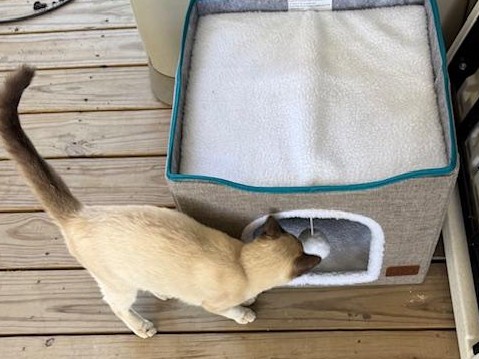 Sam is exploring her new house.
Sam is exploring her new house.Samantha the cat got her new house today. I put it together and showed her. She hit the hanging ball a few times and then moved on playing with other things in the yard. I think she will be more interested this evening.
David took Trump for a nail trim this afternoon and then picked up Church's chicken for dinner so I did not have to cook. It was delicious. Matt left before dinner. It is Halloween but no one ever comes to get candy way out here. We don't celebrate it anyway.
We had no customers again today. I know that everyone is concerned with Halloween and soon it will be Thanksgiving and then Christmas. It is this way every year with the seed business.
I spent the afternoon counting and packing seeds with my hand numb.
We got three eggs from the chickens this evening.
I got the 1949 cookbook today. I got the 2008 edition. It is called The Fireside Cook Book by James Beard and it is pretty much just as I remembered. My mother won one at school when she was a senior in high school and she would use it when I was little. I am very excited that I found it and that it got here early. I wish I had it when I was a young wife with a family but I will still enjoy it now.
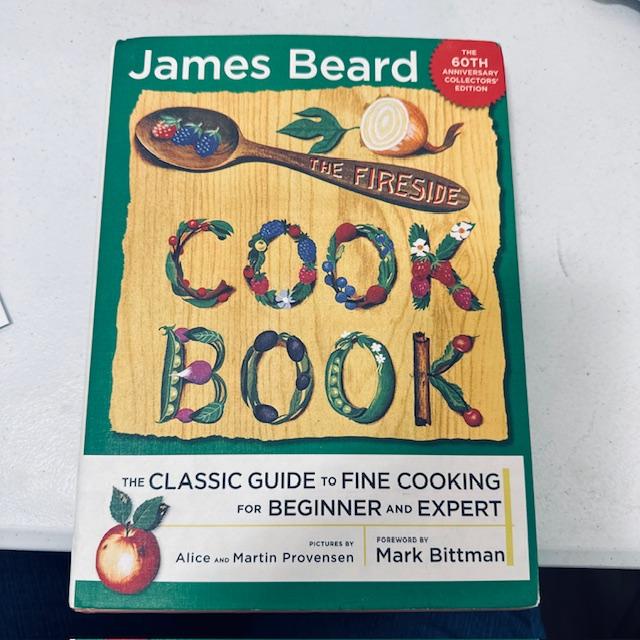 Here is the James Beard Cookbook I got today.
Here is the James Beard Cookbook I got today.Saturday, November 1, 2025
Can you believe it is already November? I can't. It is 50° this morning and gradually warming back up for another summer period which I am not looking forward to. Today's high should be 80°.
Also, tonight is the time change so be sure and set your clocks back one hour before you go to bed and enjoy an extra hour of sleep.
At David's Garden Seeds®, we are having a sale. All of our tomato and pepper seeds are now 20% off through this coming Monday night at midnight CST.
We had no customers again but several visitors to pick up things they want from us. There seems to be no shortage there...
After work, I went to the house to vacuum. I got my big vacuum, the one that "housekeeper" used two weeks ago. The attachments were not on it. What? There are places on the vacuum for all of the attachments and they were not there. I began to search all over the laundry room to try and find the attachments that I always have on the vacuum. I finally found four small attachments sitting on the floor behind my mop and brooms. She hid them all back there. But why?
I managed to vacuum the den and part of the rest of the house. My arm was killing me. I stopped and dusted the den and then dusted my kitchen table and eight chairs as well as the china cabinet. This is all stuff that she never dusted two weeks ago even though I specifically asked. My arm was done.
By this time, it was already 6pm. I went out and took care of the chickens and goats. We got three eggs yesterday and again today so there won't be many eggs for sale in the farm store for a while. I do have four dozen in there right now. The chickens are in full moulting mode and just don't lay eggs then. They go through this every single fall. There are feathers everywhere out there.
Matt texted that he was still in San Antonio getting things done and would be late for dinner and a movie.
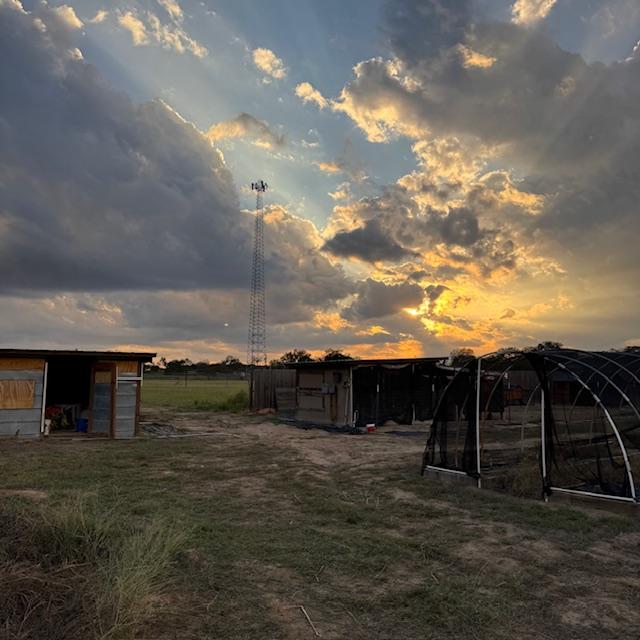 Sunset on Saturday night from the goat pen.
Sunset on Saturday night from the goat pen.When he finally arrived, David took him out back with bee suits. They moved bees into the new bee complex that they have been working on all week long. Darkness fell and they were still out there.
They finally came in and we had sub sandwiches that we made again. I was in no condition to cook.
We were late for Svengoolie so we watched a 1950 movie about going to the moon. It was weird. We started watching another one made in 1954 that was more strange but after 10pm, David decided he wanted to go to bed so we turned it off and Matt went home.
 Matt and the bees in the back of the truck moving to the new bee place.
Matt and the bees in the back of the truck moving to the new bee place.Sunday, November 2, 2025
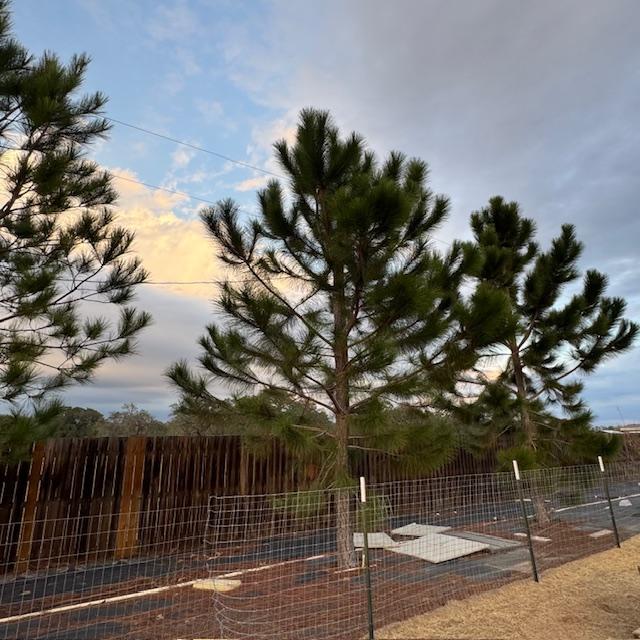 Some of our pine trees by the goat pen. The goats love to eat pine needles as a snack.
Some of our pine trees by the goat pen. The goats love to eat pine needles as a snack.Good morning. It is 50° and I still need to go out and feed all of the animals. I got a new wrist guard yesterday afternoon and I wore it all night long. My hand did not go to sleep so that is good.
I got all of the animals taken care of. Then I made breakfast biscuit sandwiches for David and me. We got ready and went to church.
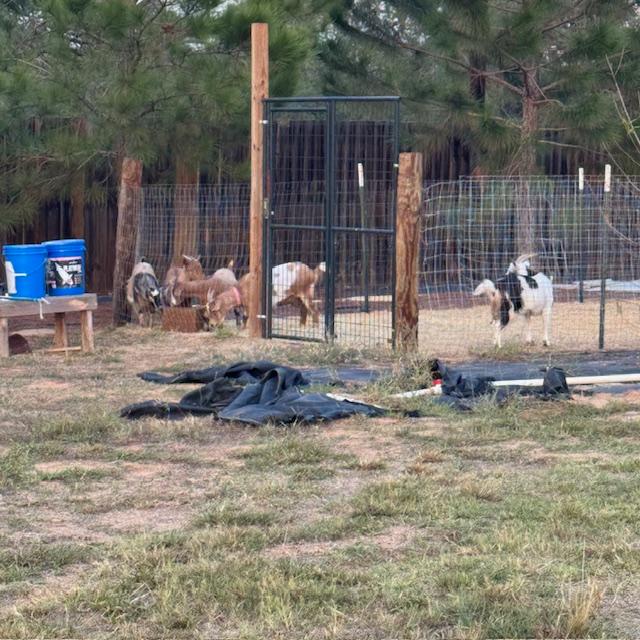 Alice and her babies are not allowing Trixie to eat whatever they eat. Then they lock horns and push each other.
Alice and her babies are not allowing Trixie to eat whatever they eat. Then they lock horns and push each other.This evening, shortly before dark, I went out to put the chickens away. I got three eggs. All but two hens went in. I put up the little metal entrance door and while I tried to get those two hens in, the door fell on the back of my leg and ripped it open. Of course, there was blood everywhere and more hens escaped. I left them and went to the goats.
Alice and Trixie were fighting again. I made the decision to separate them right then with my leg in pain. I had no help so I went in and created a home in the back with dishes, hay, and a water trough. Alice and her babies ran into the regular shelter so I closed the door. I got food and water into the back and then got Trixie and Alice back there and closed the door.
Back to the chickens...I finally got them all in and got to the house. I fixed up my leg and it hurt for most of the night.
Return from Grow Cucumbers to Year Seven Of Farm Life
Anything To Share On This Topic?
Would you like to share additional information about this topic with all of us?
Since 2009, over 2,000,000 home gardeners, all across the USA, have relied on David's Garden Seeds® to grow beautiful, productive gardens. Trust is at the heart of it. Our customers know David's Garden Seeds® stocks only the highest quality seeds available. Our mission is to become your lifetime supplier of quality seeds. It isn't just to serve you once; we want to earn your trust as the primary supplier of all of your garden seeds.
Watch Our 2022 TV Commercial!
Sing Along To Our Jingle
♪♫♪♪ ♫ ♪ ♫♪♫♫
♪♫♪♪♫♫
Peppers and peas
And lots of yummy greens
You can't go wrong
With Squash This Long
At David's Garden Seeds
♪ ♫ ♪ ♫
Our New 2024 TV Ad
Please like and subscribe on YouTube and come visit us at our Farm Store! The music on our TV ad was written, played, and sung by our son, Matthew Schulze. You can meet him when you come to the farm. He just might give you a tour. Ask him to grab a guitar and sing our jingle that he wrote.

We are David's Garden Seeds®. If you need great seeds, we've got over 1,200 varieties to choose from.
Subscribe To Mrs. David's Garden Seeds® Newsletter For FREE!
Find out what is going on down on the farm by reading our blog and by subscribing to our free newsletter for all of the information going down at David's Garden Seeds® and on the farm. I love to share helpful information with you. Please let your friends know and y'all come on down for a visit when you get the chance. We would love to meet you!
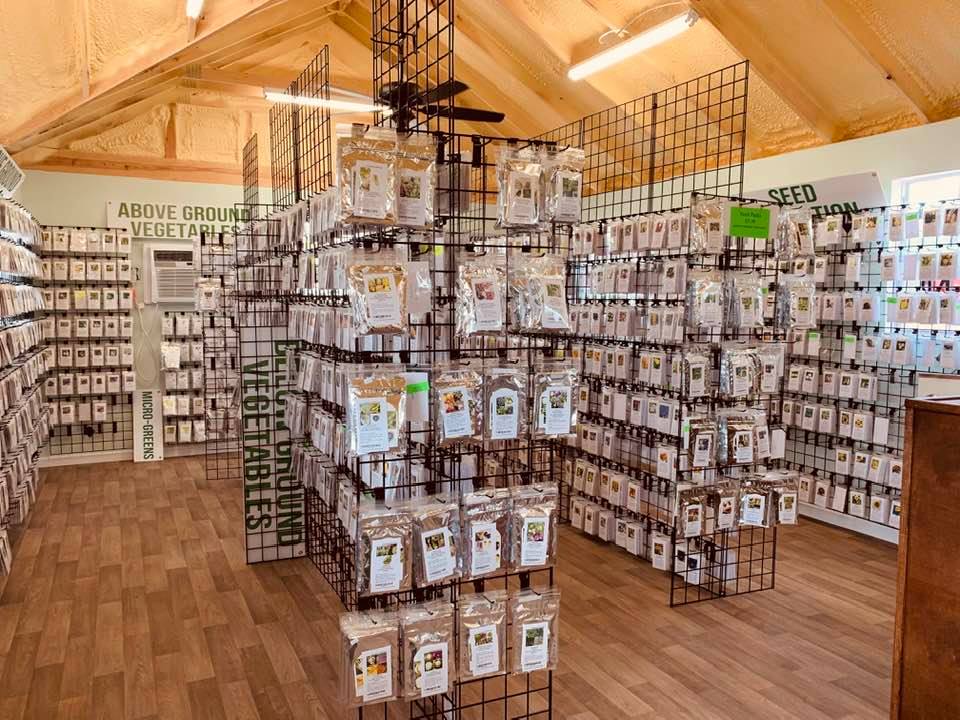
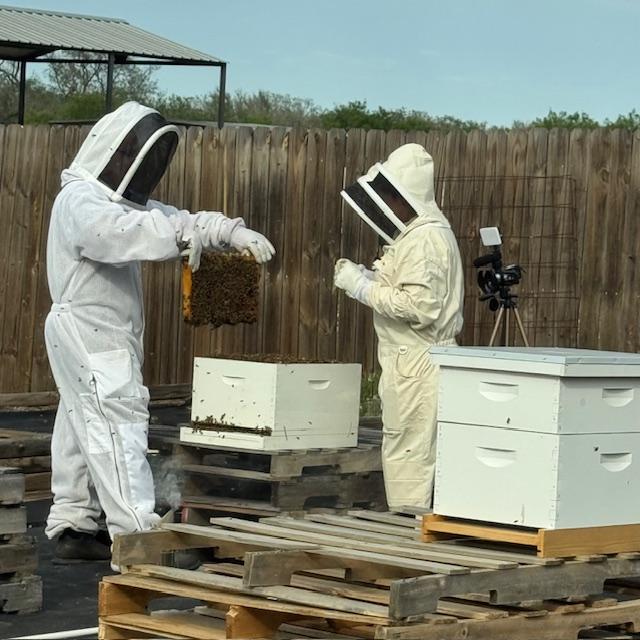 Our bee hives
Our bee hives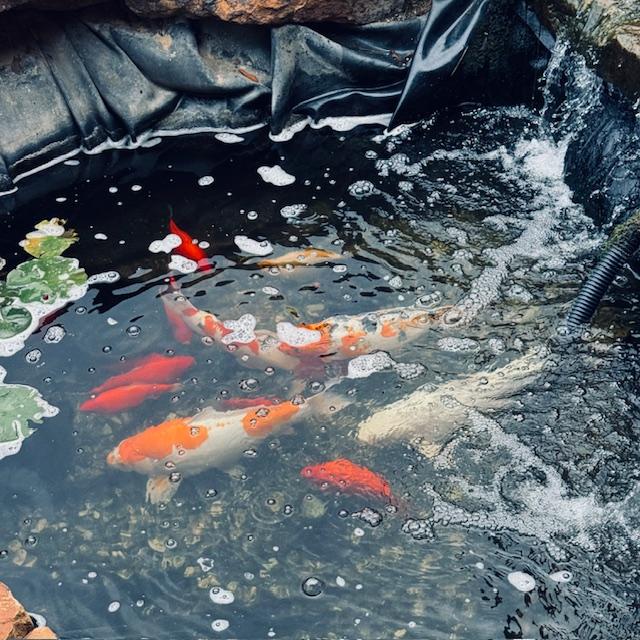 Our fish pond
Our fish pond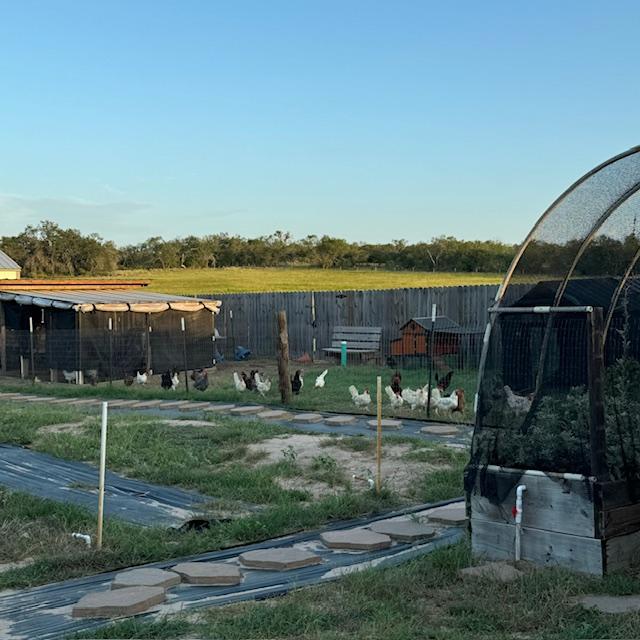 Our chickens
Our chickens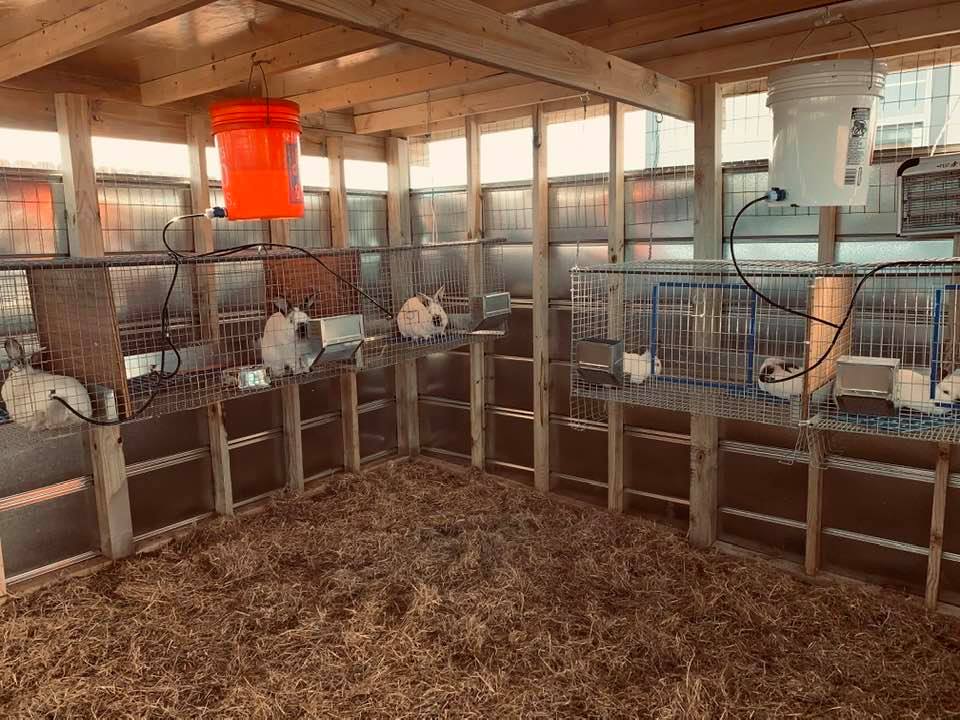 Our bunny rabbits
Our bunny rabbits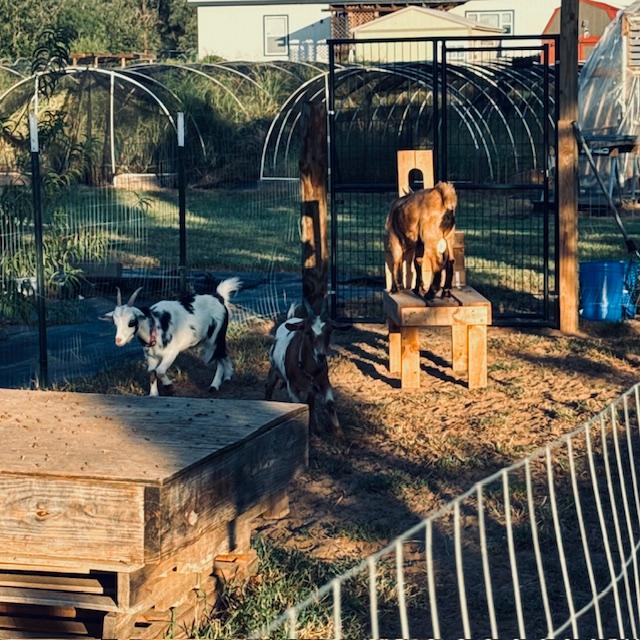 Our Nigerian Dwarf goats
Our Nigerian Dwarf goats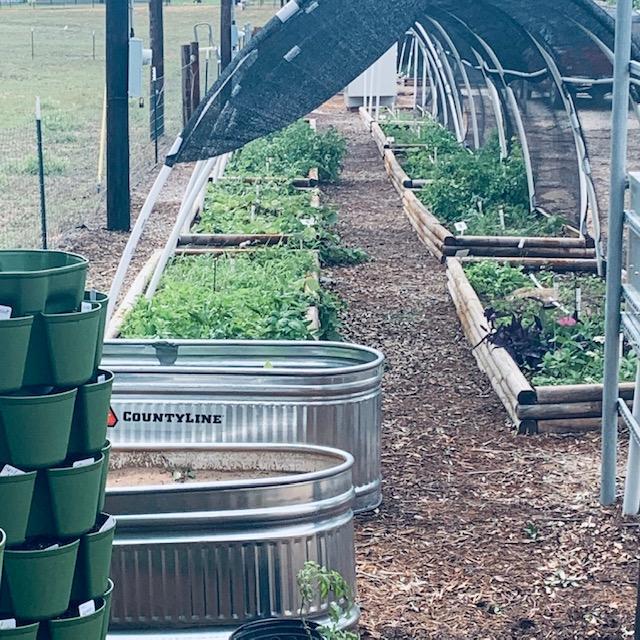 A few of our raised garden beds
A few of our raised garden beds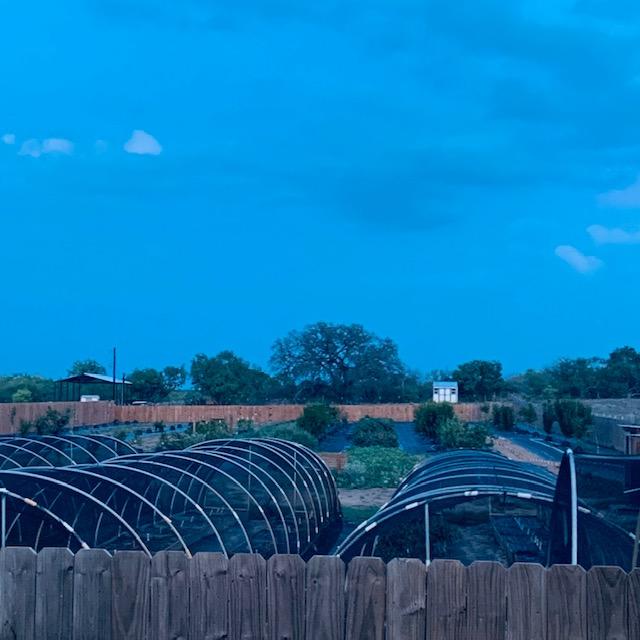 Our orchard and hoop houses
Our orchard and hoop houses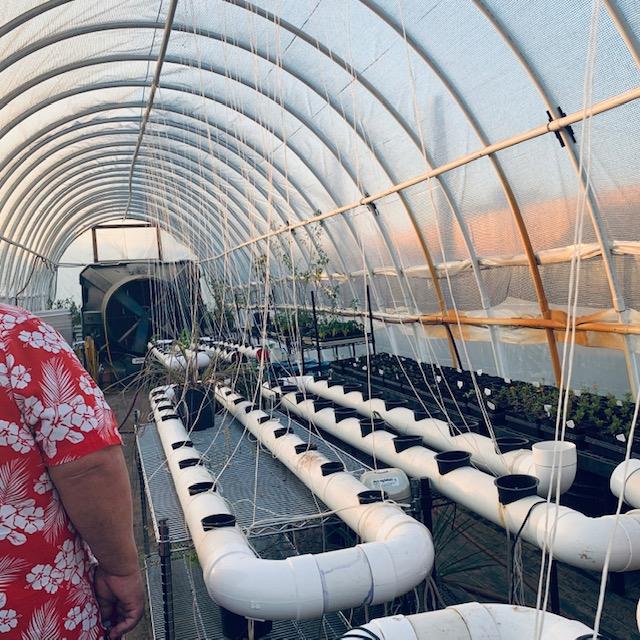 Inside our high tunnel
Inside our high tunnel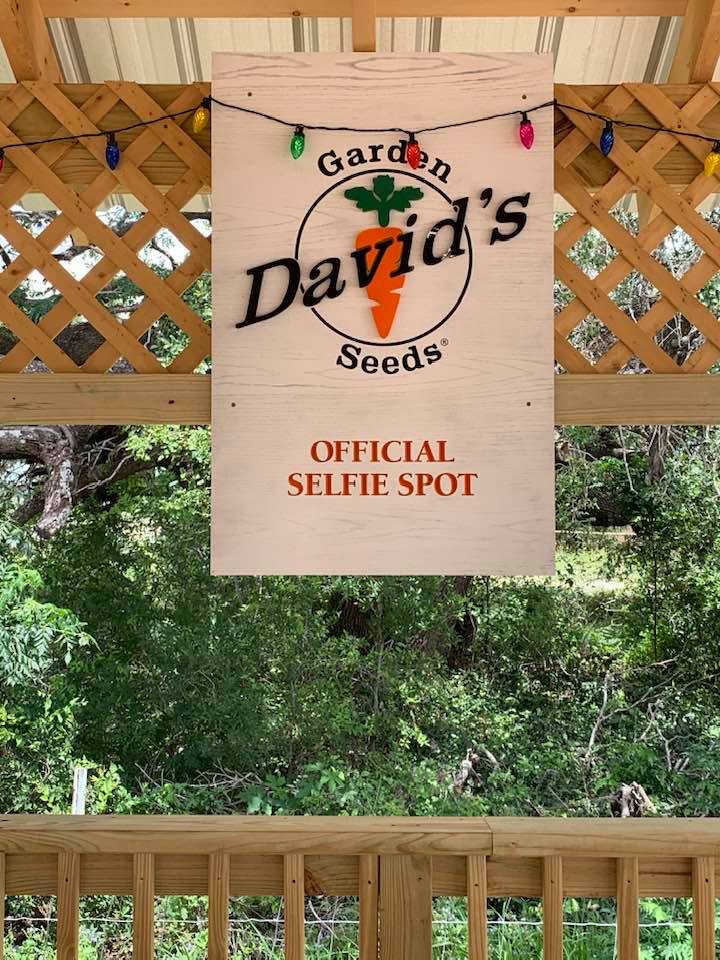 Take a selfie at our official selfie spot!
Take a selfie at our official selfie spot!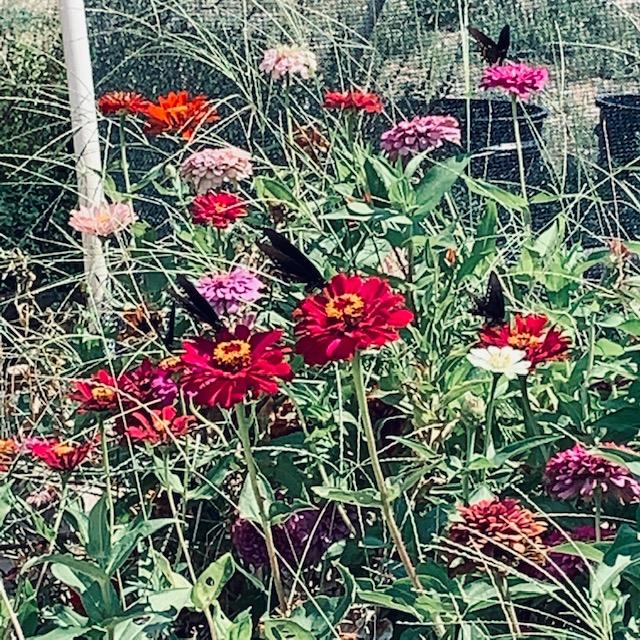 Flowers, bees, and butterflies are everywhere!
Flowers, bees, and butterflies are everywhere!